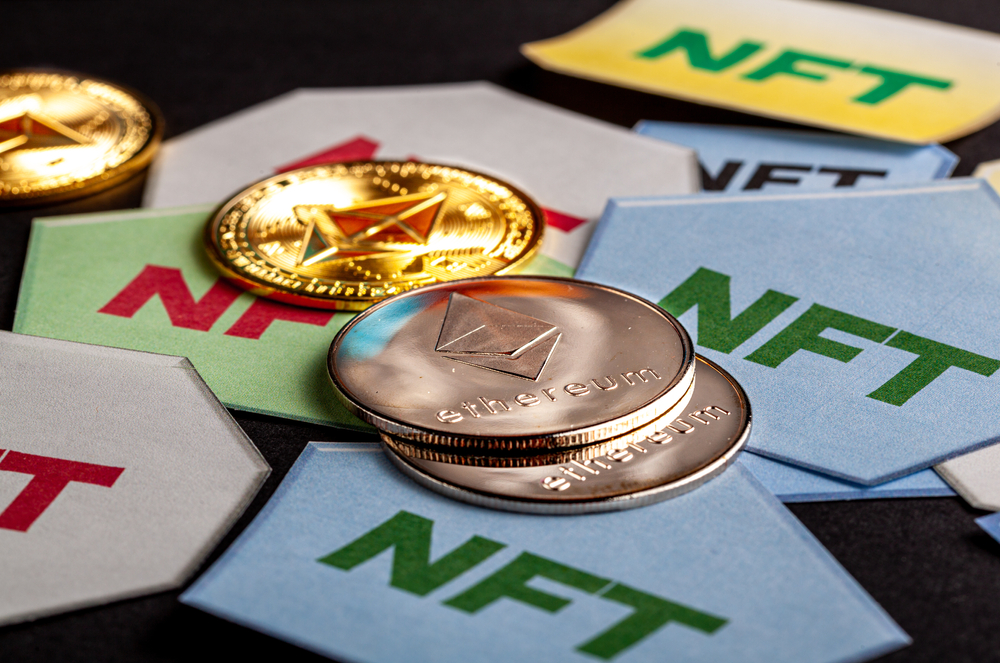
By Brian Figeroux, Esq. | Editorial Credit: Ismayil Orujov/ shutterstock.com
Key Points of this Analysis
- Inclusion in Wills and Trusts: Importance of explicitly including digital assets in wills and trusts to ensure they are not overlooked during probate.
- Access and Security: How beneficiaries can securely access digital assets, especially when they are protected by complex passwords or two-factor authentication.
- Legal Ambiguity: Highlight the legal grey areas surrounding digital assets, particularly in jurisdictions that lack clear regulations on digital inheritance.
- Introduction
1.1 Overview of Digital Assets in Modern Estate Planning
Digital assets have become an integral part of modern wealth, encompassing everything from cryptocurrencies and non-fungible tokens (NFTs) to online business accounts and social media profiles. As individuals increasingly accumulate wealth in digital forms, estate planning must adapt to address these new types of assets. Digital assets are unique because they often exist outside the traditional financial system, presenting distinct challenges for estate planning, including access, security, and legal recognition.
Digital assets are more than just financial tools; they are valuable components of personal and business identity. For example, a successful YouTube channel, a popular blog, or a widely followed social media account can generate significant income, while cryptocurrencies can represent a substantial portion of an individual’s net worth. Despite their value, digital assets are often overlooked in estate planning, leading to potential loss of wealth, access issues, and disputes among heirs.
1.2 The Growing Importance of Digital Assets in Personal Wealth
Digital assets have grown exponentially in both popularity and value over the past decade. Cryptocurrencies like Bitcoin and Ethereum have seen explosive growth, with millions of investors around the world. Similarly, NFTs have created new opportunities for artists, collectors, and investors to own unique digital items. Online business accounts, domain names, and social media profiles can generate income and influence, making them valuable assets in their own right.
This rise in digital wealth requires a shift in how estate planners and individuals approach asset management and inheritance. Traditional estate planning tools like wills and trusts must be adapted to explicitly address digital assets to ensure they are protected and properly transferred to beneficiaries.
1.3 Purpose of the Analysis
The purpose of this analysis is to provide a comprehensive guide to incorporating digital assets into estate planning. We will explore the importance of explicitly including digital assets in wills and trusts, strategies for secure access and transfer, and the legal ambiguities that currently surround digital inheritance. By understanding these key aspects, individuals can better protect their digital wealth and ensure that their assets are passed on according to their wishes.
- Understanding Digital Assets
2.1 Definition and Types of Digital Assets
Digital assets encompass a wide range of items that exist in electronic form and have value, either financial, sentimental, or both. Key types of digital assets include:
- Cryptocurrency: Digital or virtual currencies that use cryptography for security, such as Bitcoin, Ethereum, and Litecoin. Cryptocurrencies are stored in digital wallets, which can be difficult to access without the correct credentials.
- Non-Fungible Tokens (NFTs): Unique digital assets that represent ownership of specific digital or physical items, such as art, music, videos, or real estate. NFTs are typically bought, sold, and stored on blockchain networks.
- Online Business Accounts: These include income-generating accounts such as e-commerce stores, domain names, YouTube channels, blogs, and social media profiles with monetization capabilities.
- Digital Content: E-books, music libraries, photo collections, and other personal content that hold both financial and sentimental value.
- Online Financial Accounts: Accounts held with online banks, investment platforms, and payment processors like PayPal and Venmo.
2.2 The Rise of Digital Wealth: How Digital Assets Have Become Significant Components of Estates
Digital assets are increasingly recognized as legitimate and valuable components of personal wealth. In 2022, the global cryptocurrency market cap exceeded $2 trillion, illustrating the growing significance of these digital currencies. NFTs have also gained traction, with individual pieces selling for millions of dollars, establishing a new asset class that challenges traditional notions of ownership and value.
The rise of digital wealth is not limited to cryptocurrencies and NFTs. Online businesses and social media influencers generate significant income through ad revenue, sponsorships, and e-commerce, making these digital ventures important considerations in estate planning. As more individuals derive income and hold wealth in digital formats, estate plans must evolve to address these assets explicitly.
2.3 Challenges Unique to Digital Assets in Estate Planning
Estate planning for digital assets presents unique challenges that differ from traditional asset management:
- Access Issues: Digital assets are often protected by complex passwords, encryption, and two-factor authentication, which can make access difficult for beneficiaries.
- Security Risks: Digital assets are vulnerable to hacking, theft, and fraud. Secure storage and transfer methods are essential to protect these assets during the estate planning process.
- Legal Recognition: Many jurisdictions lack clear regulations regarding digital asset inheritance, creating legal ambiguities that can complicate the transfer of these assets.
- Loss of Value: Without explicit instructions and access credentials, digital assets can be lost forever, resulting in significant financial loss for beneficiaries.
- Inclusion of Digital Assets in Wills and Trusts
3.1 The Need for Explicit Inclusion of Digital Assets in Estate Planning Documents
One of the most critical aspects of estate planning for digital assets is the explicit inclusion of these assets in wills and trusts. Traditional estate planning documents often do not account for digital assets, which can result in them being overlooked or inaccessible during probate. Including digital assets in estate planning documents ensures that they are properly recognized, valued, and transferred to beneficiaries.
Key steps for including digital assets in estate planning documents include:
- Creating an Inventory of Digital Assets: Listing all digital assets, including cryptocurrencies, NFTs, online accounts, and passwords. This inventory should be regularly updated as digital holdings change.
- Explicit Language in Wills and Trusts: Wills and trusts should include specific language that addresses digital assets, ensuring that executors and fiduciaries have the authority to access and manage these assets.
- Designation of Digital Asset Executors: Appointing a digital asset executor who is familiar with the unique requirements of managing digital assets can help ensure that these assets are properly handled.
3.2 How to Structure Wills and Trusts to Address Digital Assets
Wills and trusts must be carefully structured to address the unique challenges posed by digital assets. Key considerations include:
- Authorization Clauses: Including clauses that grant executors or trustees the authority to access, manage, and distribute digital assets. These clauses should comply with federal and state laws, such as the Revised Uniform Fiduciary Access to Digital Assets Act (RUFADAA), which governs fiduciary access to digital assets.
- Instructions for Access: Providing detailed instructions on how to access digital assets, including necessary credentials, passwords, and authentication methods. This information should be stored securely and shared only with trusted individuals.
- Specific Bequests of Digital Assets: Digital assets should be explicitly bequeathed in the will or trust, specifying which beneficiaries are entitled to which assets. For example, one beneficiary may receive a specific cryptocurrency wallet, while another receives a valuable NFT collection.
- Consideration of Tax Implications: Digital assets may have specific tax implications that differ from traditional assets. Estate planning documents should account for potential capital gains, income taxes, and other tax considerations associated with digital asset transfers.
3.3 Potential Pitfalls of Not Including Digital Assets in Estate Planning
Failing to include digital assets in estate planning can result in significant challenges and financial losses:
- Loss of Access: Without explicit authorization, executors and beneficiaries may be unable to access digital assets, especially those protected by two-factor authentication or encryption.
- Legal Disputes: Ambiguities surrounding digital asset ownership and access can lead to legal disputes among beneficiaries, delaying the probate process and increasing costs.
- Asset Devaluation: Digital assets, such as domain names or online businesses, can lose value rapidly if not properly managed during the estate settlement process.
3.4 Case Studies Highlighting Successes and Failures in Digital Asset Inclusion
Case Study 1: Successful Inclusion of Digital Assets
A tech entrepreneur included a detailed inventory of his digital assets, including cryptocurrencies, NFTs, and online business accounts, in his estate plan. He appointed a digital asset executor and provided clear access instructions, allowing his beneficiaries to quickly and securely manage his digital holdings after his death.
Lessons Learned: Explicitly addressing digital assets in estate planning documents can facilitate a smooth and efficient transfer of digital wealth.
Case Study 2: Failure to Include Digital Assets
An investor with significant cryptocurrency holdings passed away without including his digital wallets in his estate plan. His family was unable to access the wallets due to missing credentials, resulting in the loss of millions of dollars in digital currency.
Lessons Learned: Failing to include digital assets in estate planning documents can lead to irreversible financial losses.
- Access and Security: Ensuring Beneficiaries Can Access Digital Assets
4.1 Security Measures: Passwords, Two-Factor Authentication, and Encryption
Digital assets are often protected by sophisticated security measures, including complex passwords, two-factor authentication (2FA), and encryption. While these measures are essential for protecting assets from unauthorized access, they can also pose significant challenges for beneficiaries attempting to access digital assets after the owner’s death.
- Complex Passwords: Strong passwords are critical for securing digital assets but can be difficult for beneficiaries to retrieve if not properly documented.
- Two-Factor Authentication (2FA): 2FA adds an extra layer of security by requiring a second verification method, such as a text message or authentication app. However, it can complicate access for beneficiaries if the secondary device is not available.
- Encryption: Encrypted wallets and files require specific keys or passphrases to access. Without these, the assets may be permanently inaccessible.
4.2 Strategies for Secure Transfer of Digital Assets to Beneficiaries
To ensure that digital assets can be securely accessed and transferred to beneficiaries, estate planners should consider the following strategies:
- Password Managers: Using a password manager to store all digital asset credentials securely can simplify access for beneficiaries. Password managers can also store 2FA backup codes and recovery information.
- Digital Asset Access Plans: Creating a digital asset access plan that outlines how beneficiaries can access digital assets, including instructions for managing security protocols such as 2FA.
- Safe Deposit Boxes: Storing physical copies of access information, such as passwords and private keys, in a secure location like a safe deposit box can provide a backup if digital methods fail.
- Appointing a Digital Executor: A digital executor can manage digital assets according to the owner’s instructions, ensuring that security protocols are followed and assets are transferred securely.
4.3 Digital Asset Management Tools and Services for Estate Planning
Several digital asset management tools and services have been developed to address the specific needs of digital estate planning:
- Digital Vaults: Digital vaults are secure online repositories where individuals can store digital asset information, including passwords, private keys, and access instructions. These vaults can be accessed by designated beneficiaries upon the owner’s death.
- Cryptocurrency Custodians: Custodial services manage cryptocurrency holdings on behalf of the owner, providing secure storage and the ability to transfer assets to beneficiaries as instructed.
- Digital Estate Planning Platforms: Platforms like My Digital Executor and Estate Exec offer tools specifically designed for managing digital assets within an estate plan, including inventory creation, access instructions, and secure document storage.
4.4 Case Studies on Access Issues and Solutions
Case Study 1: Overcoming Access Challenges
A family faced difficulties accessing a deceased loved one’s cryptocurrency wallets due to missing 2FA devices. By consulting with a digital asset expert, they were able to recover the funds through the use of backup codes and private key recovery services.
Lessons Learned: Planning for access challenges, including backup methods for 2FA and encrypted wallets, can prevent the loss of digital assets.
Case Study 2: Loss Due to Inaccessible Passwords
An online entrepreneur who generated significant income from a popular blog passed away without leaving access credentials. His family was unable to access the revenue streams, and the business quickly lost value.
Lessons Learned: Storing digital asset access information in a secure but accessible manner is essential to preserving digital wealth.

“Non Fungible Tokens (NFTs) through Ethereum blockchain”
Editorial credit: grandbrothers
- Legal Ambiguity Surrounding Digital Assets
5.1 Overview of Current Laws Governing Digital Inheritance
The legal landscape surrounding digital assets is still evolving, with many jurisdictions lacking clear regulations on digital inheritance. Key legislative frameworks that currently impact digital assets include:
- Revised Uniform Fiduciary Access to Digital Assets Act (RUFADAA): This U.S. law provides guidelines for fiduciaries to access digital assets, subject to the deceased’s explicit consent in estate planning documents.
- General Data Protection Regulation (GDPR): In the EU, GDPR has implications for digital inheritance, as data privacy laws can restrict access to digital accounts even for designated beneficiaries.
- Service Provider Policies: Many online platforms, such as social media sites and cryptocurrency exchanges, have their own policies regarding the transfer of digital assets upon death, which can override local laws.
5.2 Jurisdictional Differences in Digital Asset Regulations
The lack of uniformity in digital asset regulations creates significant challenges for estate planning. Key jurisdictional differences include:
- U.S. vs. International Regulations: While RUFADAA provides a framework in the U.S., international laws vary widely. Some countries have no laws governing digital inheritance, leading to legal uncertainties.
- Platform-Specific Rules: Each digital platform, such as Facebook, Google, or Coinbase, may have different rules regarding account access after death. Estate planners must navigate these varying policies when managing digital assets.
5.3 Challenges Faced by Estate Planners Due to Legal Ambiguities
Legal ambiguities surrounding digital assets pose several challenges for estate planners:
- Access Restrictions: Privacy laws and platform policies can restrict access to digital assets, even for authorized beneficiaries.
- Unclear Ownership Rights: Digital assets often do not have clear ownership rights, making it difficult to determine how they should be transferred upon death.
- Disputes Over Digital Assets: Ambiguities in the law can lead to disputes among beneficiaries, particularly when assets are not explicitly addressed in the estate plan.
5.4 The Evolving Legal Landscape: Recent and Proposed Legislation on Digital Assets
As digital assets continue to grow in prominence, new legislation is being proposed to address the unique challenges of digital inheritance. Key developments include:
- Proposed Amendments to RUFADAA: Efforts are underway to expand RUFADAA to provide greater clarity on the rights of fiduciaries and beneficiaries regarding digital assets.
- Emerging International Frameworks: Countries like Australia and the UK are exploring new regulations to better govern digital inheritance, recognizing the need for clear guidelines in this evolving area.
- Industry Collaboration: Digital platforms and legal organizations are working together to develop best practices for managing digital assets, including standardized processes for transferring digital wealth.
- Best Practices for Estate Planning with Digital Assets
6.1 Creating an Inventory of Digital Assets
Creating a comprehensive inventory of digital assets is a crucial step in estate planning. This inventory should include:
- A list of all digital assets, including cryptocurrencies, NFTs, online accounts, and digital content.
- Access information such as usernames, passwords, and recovery codes.
- Instructions on how to manage and transfer each asset.
6.2 Appointing Digital Asset Executors or Fiduciaries
Appointing a dedicated digital asset executor or fiduciary who understands the complexities of managing digital assets can ensure that these assets are properly handled according to the owner’s wishes.
- Role of Digital Asset Executors: Executors should have the authority and knowledge to access, manage, and distribute digital assets.
- Legal Authorization: Executors must be explicitly authorized in estate planning documents, complying with relevant laws like RUFADAA.
6.3 Keeping Digital Asset Access and Security Information Up-to-Date
Digital assets and their access information can change frequently, making it essential to regularly update the estate plan to reflect current holdings and security measures.
- Regular Reviews: Estate plans should be reviewed annually to ensure that all digital asset information is accurate and up-to-date.
- Updating Security Protocols: Changes in security measures, such as new 2FA methods, should be documented and shared with trusted individuals.
6.4 Regularly Updating Estate Planning Documents to Reflect Changes in Digital Holdings
Digital assets can fluctuate in value and ownership over time, necessitating regular updates to estate planning documents.
- Adjusting Bequests: Changes in digital asset value may require adjustments to specific bequests in the will or trust.
- Adding New Assets: As new digital assets are acquired, they should be promptly added to the estate plan to ensure they are covered.
- Case Studies: Lessons from Real-World Scenarios
7.1 Examples of Successful and Unsuccessful Digital Asset Management in Estate Planning
Case Study 1: Comprehensive Digital Asset Planning
An investor included detailed instructions for his extensive cryptocurrency portfolio in his estate plan. By using a combination of digital vaults and a dedicated digital executor, his heirs were able to access and manage the assets efficiently.
Lessons Learned: Proactive planning and the use of specialized tools can facilitate the secure transfer of digital assets.
Case Study 2: Loss of Digital Assets Due to Lack of Access
A family lost access to a significant amount of cryptocurrency when the owner passed away without sharing access credentials. Despite legal efforts, the funds were never recovered.
Lessons Learned: Secure but accessible storage of access information is essential to prevent the permanent loss of digital wealth.
7.2 Key Takeaways for Ensuring Smooth Digital Asset Transfers
The case studies illustrate the importance of explicit inclusion of digital assets in estate planning, secure access strategies, and the appointment of knowledgeable executors to manage digital wealth.
7.3 Applying Lessons Learned to Your Own Estate Planning
Individuals should take proactive steps to include digital assets in their estate plans, regularly update access information, and seek professional guidance to navigate the complexities of digital inheritance.
- Conclusion
8.1 Recap of the Importance of Including Digital Assets in Estate Planning
Digital assets are an increasingly important component of personal wealth, and their inclusion in estate planning is essential to ensure their protection and proper transfer to beneficiaries.
8.2 Final Thoughts on Navigating the Challenges of Digital Asset Inheritance
The challenges of digital asset inheritance, including access, security, and legal ambiguities, require careful planning and the use of specialized tools and strategies.
8.3 Call to Action: Start Including Digital Assets in Your Estate Plan Today
Estate planners and individuals are encouraged to take immediate steps to incorporate digital assets into their estate plans, using the best practices outlined in this analysis to safeguard their digital wealth for future generations.

